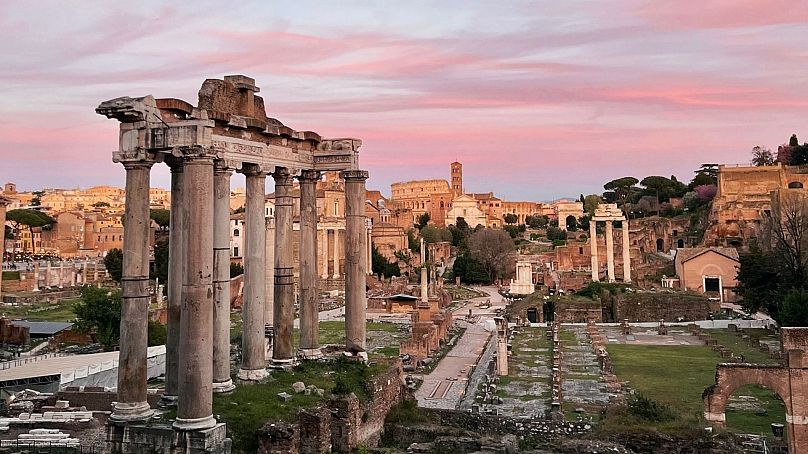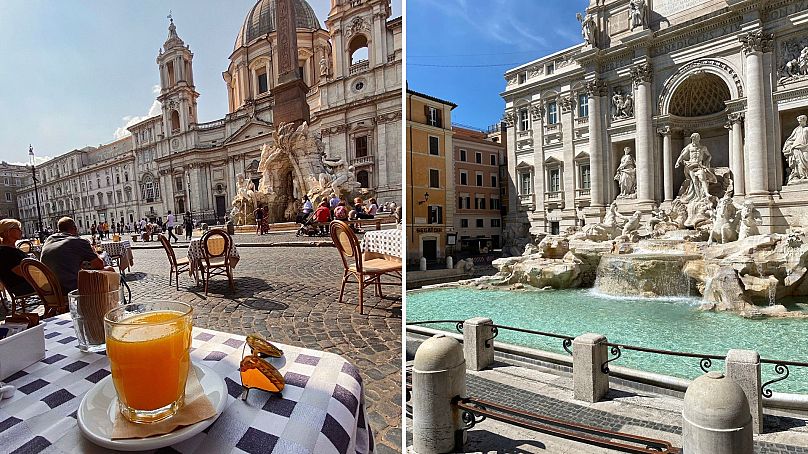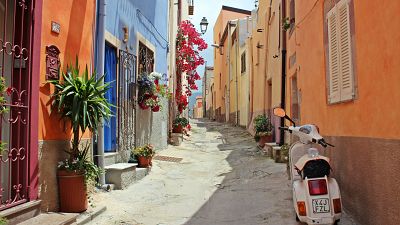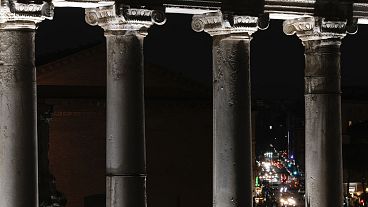Always wanted to live in Rome? Here’s what it’s really like to move to the Italian capital.
“Welcome to the jungle!”
It was these four words, uttered by a burly taxi driver picking me up at Rome’s railway station, that greeted me to the Italian capital, where I decided to move for my PhD research two years ago.
As an Italian by birth and Brit by upbringing, I’d returned to my homeland with giddy optimism, but with a clear warning - as any Roman will gleefully tell you, it’s not a city for the faint-hearted.
Social media would have you think otherwise. In everything from sun-drenched Tik Tok videos to Netflix rom-coms as sugary as gelato, Rome is depicted as the epicentre of the ‘dolce vita’ (sweet life).
The result? Tourists are flocking to Italy at record rates.
So when you strip away all these preconceptions, what is living in Rome actually like? And does the sought-after dolce vita truly exist?
A beautiful chaos: the Roman paradox
Rome’s beauty needs no introduction. Almost three millennia of history are on display in a buffet of architectural wonders.
Ancient ruins? Miles of them. Fresco-covered churches? Over 900. Art Nouveau glamour? Visit the eccentric Coppedè neighbourhood. Want to see the pyramids? You’ve even got one of those: the 2,035-year-old Pyramid of Cestius.
And that’s the first thing that will strike anyone upon moving to Rome. Beauty truly is everywhere, in the smallest of details. It’s in discovering hidden courtyards, secret churches, finding ancient Roman mosaics in the basement of a small local restaurant (Trattoria Tritone 1884, for anyone wondering).
Just as beauty is omnipresent, so, too, is squalor and disorganisation. The city is a victim of urban decay and diminished public services - testament to decades of poor local administration.
And that is the paradox of Roman life: that good, the bad and the ugly are inextricably intertwined, making life in the city in equal parts idyllic and infuriating.
Adapting to this chaotic cocktail was certainly a baptism by fire at first, a far call from the structured life I lived back in England. It meant hours queueing at offices, maddening transport delays, and waiting weeks for home repairs.
But it’s a chaos I’ve come to cherish, and it is no cliché to say that the spontaneity of Roman life is as glorious as in the silver screen classics.
Life in Rome is bumping into a nun having coffee at an open-air library cafe near the Vatican. Sister R and I are still in touch on WhatsApp.
It’s living in a centuries-old building and overhearing a full-throttled hip hop party on the top floor. Last I checked, an octogenarian lived there.
It’s befriending someone on an overcrowded train, getting an aperitivo in the lively Campo de’ Fiori market, and, next thing you know, being treated to a plate of exquisite lemon spaghetti on their grandmother’s terrace.
Rome’s woes are plenty, but even these can be the sources of congenial exchanges, as you strike up a lively conversation with a fellow disgruntled commuter while waiting for a bus that never arrives.
Complaining is Italy’s national hobby, and it’s one which foreigners who move to its capital quickly adopt. Indeed, all of my expat friends quip that they can’t wait to leave the city - but none of them ever do.
The not-so-dolce vita: The darker side of life in Rome
If you look beyond the dolce vita’s charming facade, however, you quickly discover that life in Rome has a much darker underbelly.
For starters, the Eternal City is no stranger to the global inflation scourge, and the housing market has been its main victim. Landlords, desperate to make a quick buck, have realised that holiday rentals are more profitable, driving up demand and pushing accommodation rates through the roof.
The isolation I experienced moving to Rome in 2021, mid-Covid, might have felt like a curse at first, but it at least allowed me to grab the flat of my dreams at a rate affordable for a PhD student. While I feel privileged to be in this situation, I am aware that it is the product of a lucky circumstance I might not enjoy for long.
Case in point, one of my friends has just been evicted from their flat by a landlady who, in her words, wanted to “make double the money” with Airbnb.
With jobs hard to find and paid little, it’s no wonder 71 per cent of 18-34-year-olds in Italy still live with their parents. And now, younger generations are taking their grievances to the streets, as students have been camping outside of the city’s Sapienza University to protest rising rent rates.
But the struggles individuals may face when living in Rome go beyond money.
Navigating Rome as a foreigner
Things aren’t always easy for outsiders moving to the city. Italy’s red tape is notoriously labyrinthine. It is invariably harder to navigate if you’re a foreigner - especially one of colour - and speak little-to-no Italian.
For some of my immigrant friends, traumatic experiences at the hands of local bureaucracy - being endlessly shuttled from one office to the next - has left them resorting to therapy.
And life isn’t so rosy for the queer community either. While Rome itself is a generally gay-friendly city - as its recent Pride parade demonstrated - Italy is now governed by a right-wing coalition hostile to advancing LGBTQ+ rights, and the Catholic Church’s traditionalist shadow still looms.
Just last month, Rome’s conservative regional president withdrew his official endorsement of Pride, while Italy slipped down ILGA’s Rainbow Index, ranking as Western Europe’s worst country for LGBTQ+ equality.
Such political realities seep into attitudes on the ground. As a bisexual man myself, I remember one of the first Romans I dated didn’t want to hold my hand in public, fearing we’d attract unwanted attention.
And a more repressed climate often leads to more toxic behaviours within the gay community itself. “Careful dating Roman guys” has become a sad, albeit recurring, generalisation among my queer male friends.
Is it worth moving to Rome?
So, is it worth moving to Rome? And is the idyllic, carefree dolce vita a myth or a reality?
Rome is a city which offers a lot, despite what its eternally self-deprecating residents may tell you. Its beauty is incomparable, its lifestyle rich, and the human joys it can offer second-to-none.
But it’s a city which makes you fight for the pleasures it often leaves hanging in front of you like an unobtainable fruit, a place which can be hard to love.
To anyone considering moving to Rome, make sure you learn some Italian first. And above all, make local friends who can help you embrace the chaos.
And as for the dolce vita?
The concept is founded on the premise that it is fundamentally accessible to all: an Aperol spritz and a pizza, replete with a sunset burning over the Gianicolo terrace’s breath-taking panorama, all for a handful of euros.
And there’s an ounce of truth to this. Many of Rome’s main wonders, from its resplendent Baroque churches to decaying ruins, are essentially free. Yet the emotional and financial costs of surviving in the city can make such ‘free’ pleasures feel impossible to reach.
“Rome is undoubtedly a beautiful city,” one young local told me. “But when you’re working for pennies, stuck in traffic for hours, and exhausted by the time you get home, can you really enjoy it?”
Sure, anyone can live the ‘Roman dream’. Yet for many, it takes a whole nightmare to be able to ever experience it in the first place.
The dolce vita exists, and it is sweet indeed. But it often comes at a saltier cost - one that not everyone can afford, and not everyone is afforded.






